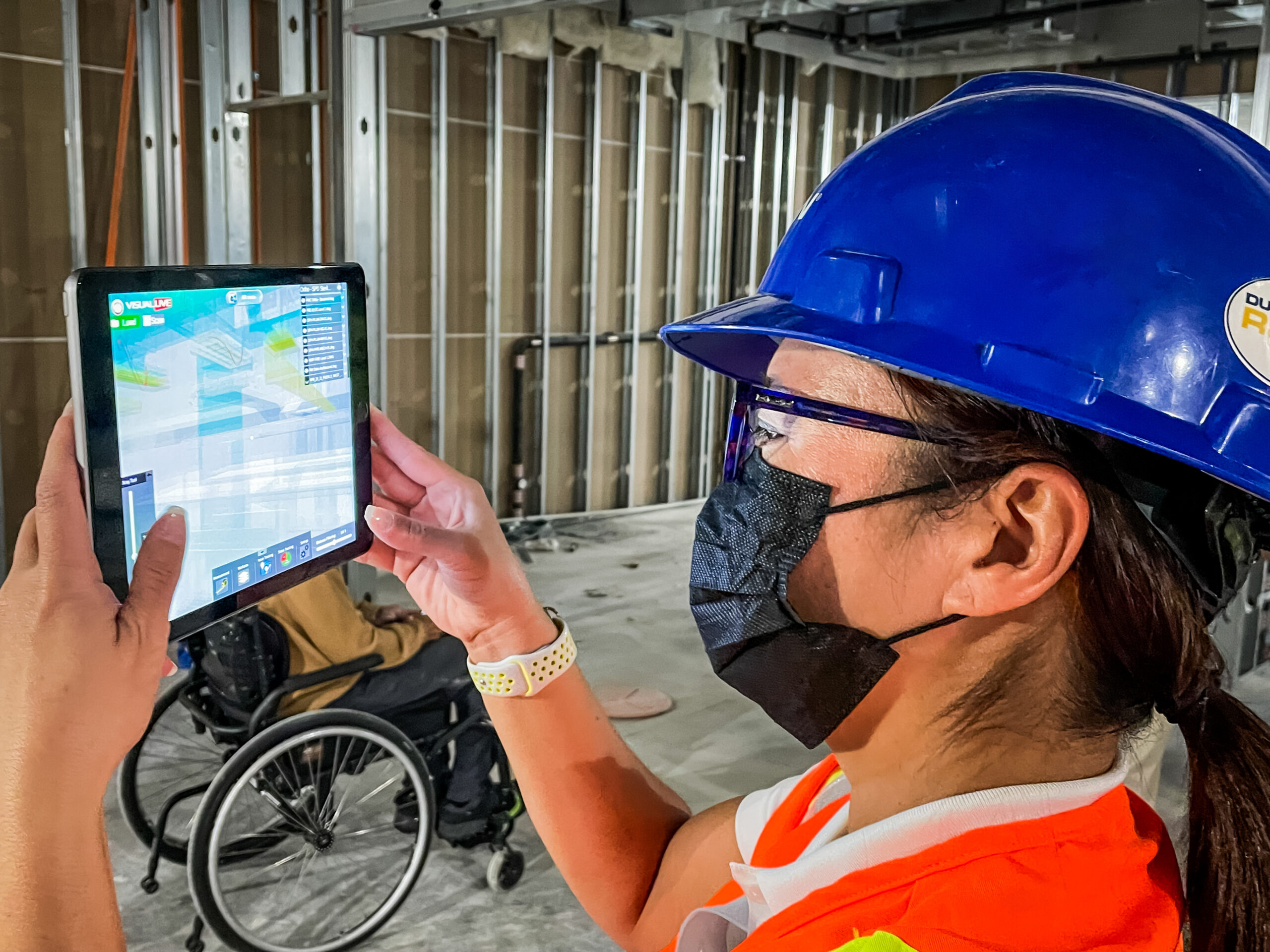
Envisioning the Future of Healthcare Construction through Virtual and Augmented Reality – Mile High CRE
By Lina Stinnett, VDC Director, JE Dunn Construction
For an industry undergoing drastic change, the ability of healthcare employees to be adaptable is crucial, as are the facilities in which they work. The flexibility of these buildings addresses healthcare’s constant evolvement over time and responds to the changing needs of the workforce, patients, and technology integral to a healthcare facility. In response, collaborative construction partners are turning to innovative technologies like Virtual Reality (VR) and Augmented Reality (AR) to transform their healthcare client’s futures. As it relates to construction, the healthcare industry has seen invaluable benefits from both of these applications. These tools help validate the constructability and usability of crucial specialty spaces by immersing all team members in the process. JE Dunn has embraced the use of VR and AR in the construction of healthcare facilities, most recently at Parkview Medical Center in Pueblo, on their new Orthopedic Hospital and Cancer Center projects.
Similar to many technological advancements, there were reservations about VR and AR being introduced to the construction site. Yet, when team members and staff personnel were trained on the technology and became comfortable using it to its full potential, their mindset changed and quickly became advocates for leveraging these technologies to help achieve the desired end product.
JE Dunn began implementing VR and AR into the process of healthcare construction at Parkview Medical Center in 2018 during the expansion and renovation of the emergency department. Now, the project team is utilizing the technology for the third time on the main Parkview campus for their new Cancer Center. While these functional exercises have altered and developed over time, the results have maintained certain and offered value to the Parkview client.
The best use of Virtual Reality begins during the design phase when the project team is still collaborating on the evolving design. Multiple user groups including owners, doctors, nurses, architects, and facilities staff have been able to fully immerse themselves in their respective spaces and provide early, real-time feedback for the design documents prior to design completion. Augmented Reality acts similarly to Virtual Reality, only later on during the construction phase where more groups are involved like key mechanical and electrical trade partners, for example. With the use of a mobile device and the AR application, end users can utilize the BIM (Building Information Modeling) model to visualize their overall space and equipment layout within its actual physical space at the project job site. This helps validate that the design is being constructed the way it was intended to be per consensus from the entire project team. Both processes bring unique groups together into one setting during the various phases of design and construction, to ensure harmonious and accurate construction of the facility that meets and exceeds the client’s expectations.
JE Dunn Senior Superintendent, Tony Scovel states, “Prior to using these applications, end-users would have to go off of construction documents or a full-scale mock-up to envision what their space would look like. Prior to completion, it’s difficult for them to understand the relationship between the major mechanical and electrical systems, millwork, and equipment. The VR and AR capabilities let end users visualize how equipment, furniture, and millwork fit in the room, allowing JE Dunn to capture any deficiencies that may need to be adjusted. This saves time and cost on any modifications, especially when the project is in the middle of installing final finishes.”
The value of these applications extends past design and construction, as JE Dunn has also experienced their relationship grow and become stronger with the Parkview Medical Center team. JE Dunn works directly with the medical staff during these exercises to ensure proper placement of furniture and equipment and for the ability to understand the client’s needs for the facility.
Reverse mentorship has also been a major opportunity for growth at JE Dunn. The VR and AR presence at Parkview and other healthcare facilities is a great way to apply reverse mentorship to maximize a team’s talents. Much like the hospital staff, technology was a foreign language to superintendents and project managers who have become accustomed to doing most of their work manually or by hand.
The current generation entering the workforce embraces new technology as it is second nature to them. This up-and-coming, technologically-innate generation has connected with the experienced superintendents and project managers to create a working partnership that enhances the overall execution of a project.
Being able to envision and virtually walk through their spaces before construction is complete has been a game-changer to many healthcare facilities and their professionals. With ever-evolving changes in the healthcare industry, the adoption of AR and VR will continue to improve all facilities, not only for owners and their staff, but for all members of their respective communities who benefit from these hospitals and the services they provide.
This content was originally published here.

